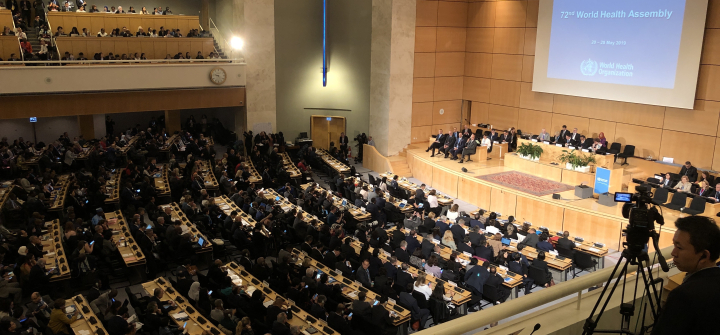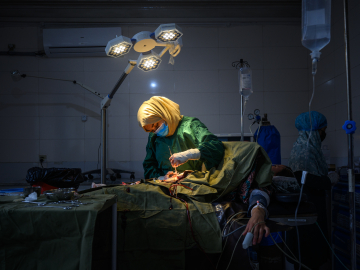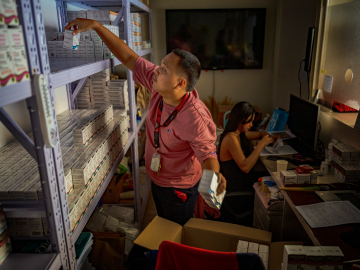The World Health Assembly: What It Does, Why It Matters
What is the World Health Assembly?
Each May, representatives from the 194 member states of the WHO gather in Geneva to discuss, argue, haggle, and sign off on the agency’s priorities and policies.
It’s called the World Health Assembly, and it’s the premier decision-making body of the WHO.
Country reps consult and set new health objectives, targets, and strategies. By endorsing resolutions, they set big-picture goals for countries, WHO leadership, and other stakeholders.
The Assembly also sets WHO’s direction by determining its operational, financial, and technical policies as well as setting its budget. It also appoints the WHO Director-General to a 5-year term.
WHO collectively embodies the WHA, the 34-member Executive Board, and the Secretariat (WHO staff). The Executive Board gives effect to the decisions made by the Assembly by operationalizing the policies. The Secretariat implements these policies.
One of the only multilateral forums in global health, the WHA ensures every country has a seat at the table and, at least theoretically, a voice in discussions. Member states such as the US, Germany, and the UK, among others, have long played an influential role in shaping the adoption of resolutions. Increasingly, however, countries like China, Brazil, India, Indonesia, and South Africa have also come to shape discussions at WHA.
How does the Assembly set WHO policies?
Each WHA typically considers scores of agenda items from the immediate to the long term, the operational to the strategic. From antimicrobial resistance to mental health, financing to intellectual property, sexual and reproductive rights to the standardization of medical technologies, the agenda in any Assembly is vast and diverse.
Discussions on agenda resolutions can begin weeks, or even months, in advance of the WHA. Negotiations often continue even in the final days of the Assembly. For some issues, negotiations are concluded at the Assembly in informal, closed-door drafting groups of member states.
The WHA has the final say on WHO’s priorities, making decision-making a slow process, member states have noted. However, there is no real appetite to change this system, observers say.
What does the Executive Board do?
Typically, the Executive Board meets each January and May, discusses policy matters, and then recommends draft decisions or resolutions that will be considered by the next WHA. This prep work allows for more extensive discussion of issues pre-WHA and is seen as a useful way to build consensus in advance. The EB also ensures the Secretariat responds appropriately to WHA decisions and resolutions.
However, some experts believe that the lengthy deliberations at the EB resemble a “mini-World Health Assembly,” instead of being a nimble and agile board process. This is also because countries that are not a part of the Board have the right to influence proceedings and decisions of the EB.
The EB comprises technical experts designated by 34 member states that have been elected by the WHA to serve for 3-year terms.
The EB also has emergency functions with the authority to adopt final decisions. (The emergency functions have been exercised only twice – the emergencies of Ebola and the on-going COVID-19 pandemic).
Why are the decisions made at the Assembly important?
WHA decisions may not always be legally binding, but they are important because they reflect political consensus and set precedents.
“Resolutions have political weight, as an agreed statement of policy that can be used domestically by governments as well as by industry, political parties, NGOs,” Gian Luca Burci, Adjunct Professor in International Law at the Graduate Institute in Geneva and a former legal counsel at WHO, says. “They can also be a political resource to be used in international relations, by other international organizations among others.”
For example, when discussing rising drug prices, stakeholders often go back to a resolution on transparency in drug costs that was passed by the WHA in 2019.
The accumulation of decisions on certain issues establishes precedents that can shape international law. Experts say detailed resolutions give credence to technical policies set by the WHO. If a resolution is detailed, it becomes more difficult to ignore statements that have been adopted by 194 member states at the Assembly. Setting norms and standards is a leading function of WHO.
“In addition, they establish reporting and other accountability mechanisms because they create opportunities for peer review, naming and shaming, and mutual learning,” Burci says.
Who are the other players at WHA?
Non-state actors like civil society organizations, philanthropies, pharma, and other groups have long sought to influence WHA deliberations and resolutions to advance their goals for international health policy.
But it’s not easy to get past cumbersome processes including governing bodies, intergovernmental working groups, and the WHA itself.
“Civil society organizations have since many years, and for good reasons, raised the issue of a shrinking civic space and difficult working conditions in their interaction with the [WHO] and in particular the WHO governing body meetings,” says Thomas Schwarz, executive secretary of the Medicus Mundi International Network and the Geneva Global Health Hub.
CSOs do recognize WHO’s recent efforts to engage with civil society undertaken by the WHO, but a transformation to WHO’s institutional culture is needed, Schwarz adds.
What else happens at the WHA?
Often alongside scientific and technical deliberations, long standing political disputes such as in Palestine, Taiwan, Syria, Ethiopia, and now, Ukraine, have surfaced during the proceedings of WHO’s governing body meetings. And the WHA is no exception.
Priti Patnaik is the founding editor of Geneva Health Files, a weekly investigative newsletter that tracks power and politics in global health. She is based in Geneva.
Ed. Note: This article is part of Global Health NOW’s Local Reporting Initiative, made possible through the generous support of loyal GHN readers.
Join the 50,000+ subscribers in over 170 countries who rely on Global Health NOW summaries and exclusive articles for the latest public health news. Sign up for our free weekday newsletter, and please share the link with friends and colleagues.
Representatives from 194 member states gather for the opening of the 72nd World Health Assembly in Geneva on May 20, 2019. Image: Brian W. Simpson




